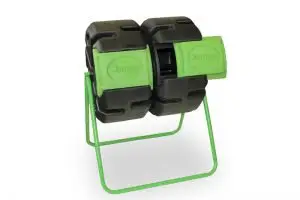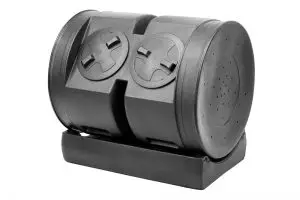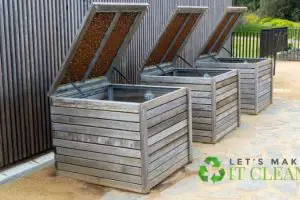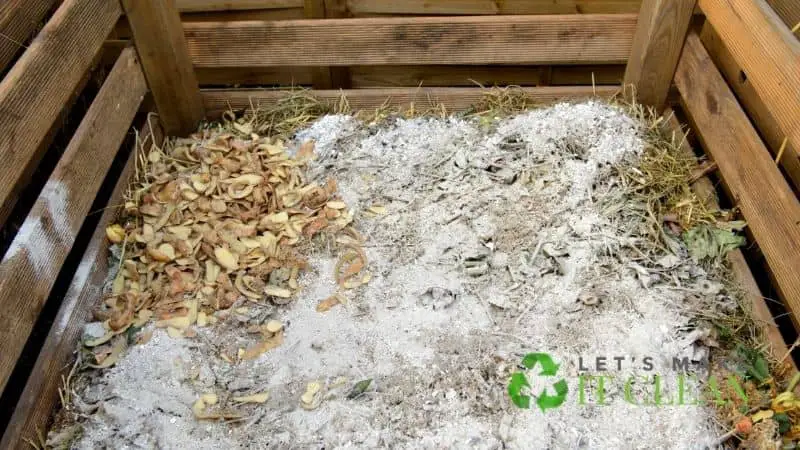Are you interested in knowing how to clean your composting toilet?

Don’t stress because our detailed guide will comprehensively show you how to clean and maintain your compost toilet. Innovation has heralded technology in many fields and toilets are not an exception.
Quick Navigation
- How Often Do You Have to Clean a Composting Toilet?
- Do Composting Toilets Smell Bad?
- Can You Pee in a Composting Toilet?
- Where Do You Dump Urine Out of a Composting Toilet?
- How to Keep Your Composting Toilet Clean as a Whistle
- What Parts of a Composting Toilet Need to Be Cleaned?
- What Cleaning Products Can Be Used With a Composting Toilet?
- Conclusion
A composting toilet is designed to treat human waste using a biological process known as composting. If you don’t own yet one, have a look at our best composting toilet reviews. Note that in this process, human waste and organic matter are turned into composite-like material.
This process aims to produce humus-like end products that can highly enrich the soil if used as manure. These toilets are called “Dry toilets” as they don’t use water for flushing.
The toilet bowl is designed in such a way that the contents of the composite pile are ultimately separated. The solid waste from the liquids and urine. Notably, the toilet bowl does not produce foul smells.
How Often Do You Have to Clean a Composting Toilet?
The composting toilet is an innovative product for people who are always on the road since the compost chamber doesn’t need to be dealt with daily as a result of the composting system. Of course, the toilet seat can be cleaned frequently using a toilet brush.
This ensures the bowl or the toilet pedestal remains clean at all times.
Also, the extensive toilet storage facility ensures that urine and solid waste are not emptied on a daily basis. This extinguishes the need for a water treatment plant.
For instance, based on full-time usage by two people, urine may be emptied after every 3-4 days with solid waste material disposed of once a month.
Do Composting Toilets Smell Bad?
People assume that composting toilets stink up the house merely because they don’t have a flushing system. On the contrary, while using these toilets, expect little to no odor.
The only smell you will experience is similar to that of wood or mulch. This is because sawdust and coco coir are some of the products that are used to make a compost toilet function optimally.
90% of the total waste that goes inside the compost chamber is liquid. The water eventually evaporates and is taken back to the environment leaving the solid waste which is eventually used as a fertilizer.
Can You Pee in a Composting Toilet?
People wonder whether it is possible to pee in composting toilets. Diverting compost toilets work by separating urine with solid. Therefore, you can urinate in them.
When poop and urine mix together the result is the creation of sewage. Now, this sewage is responsible for the smell that is associated with the normal flush toilets.
When poop and urine are separated, you create two materials that are reusable and can be introduced back to the environment.
Where Do You Dump Urine Out of a Composting Toilet?
Before dumping urine out of composting toilets, The first step is to check with the local council whether there is a restriction. If you decide to empty the urine in an open area, always spread it out in a wide area rather than in a single spot.
Doing so reduces the chances of overwhelming organic matters with too many nutrients and eliminates urine odor as well.
Urine contains nitrogen which is a critical nutrient for plant growth. Thus, you can spread it around your garden.
How to Keep Your Composting Toilet Clean as a Whistle
Cleaning your composting toilets is part of the maintenance requirements. First, it’s best to avoid using chemical detergents as they have strong chemical ingredients. Chemicals are harmful to the composting process since they kill the friendly bacteria that enable the process to succeed.
Apply natural detergents and enzyme catalysts instead as this supports the composting process.
Use a toilet brush. Be gentle to avoid damage. After finishing, sprinkle water and wipe it out using a wet toilet paper or a paper towel.
What Parts of a Composting Toilet Need to Be Cleaned?
The most important parts of a composting toilet that need to be cleaned are the toilet seat and the lid, and the bowl or pedestal.
The Toilet Seat and the Lid
This is the area where you spend most of your time. For this reason, you need to prioritize it when cleaning composting toilets. You need to use the right cleaning products as the composting system is sensitive to products with strong chemical ingredients.
The Bowl or Pedestal
Cleaning this area is similar to cleaning traditional flushing toilets. The use of natural flush enzymes is highly recommended. You can make use of a product such as “Toilet Duck” since it falls under the detergent category. Just squirt it around the bowl or pedestal.
Allow it to stay on the compost toilet for a few minutes before you embark on cleaning it with a toilet brush. Clean around the bowl or pedestal until it is clean.
Once you are through, sprinkle a little water. Alternatively, use wet toilet paper to wipe the inside of the pedestal.
Most importantly, never use toilet wipes as they are made of strong chemicals that are very harmful to the compost.
What Cleaning Products Can Be Used With a Composting Toilet?
You can only use natural detergents and enzyme catalysts to clean composting toilets. Detergents with strong chemical ingredients are harmful and may kill the composting system of the toilet.
Here are a few of the recommended natural detergents with the enzyme.
1. Gempler’s Extra-strong All Natural Bacterial Digestant
This is a widely accepted detergent for cleaning composting toilets. Its all-natural Enzymes and bacteria convert sewage into carbon dioxide and water, enabling effective cleaning.
Prices pulled from the Amazon Product Advertising API on:
Product prices and availability are accurate as of the date/time indicated and are subject to change. Any price and availability information displayed on [relevant Amazon Site(s), as applicable] at the time of purchase will apply to the purchase of this product.
It can also be used in drain fields, leach beds, sinks, floor drains, grease traps, and more.
2. Sun-mar Microbe Mix
This natural blend of microbes and enzymes is designed to accelerate composting in the compost chambers. Plus, its usage is very economical as one container will last you for months, ensuring you don’t lack a detergent for your composting toilet.
Conclusion
Composting toilets have gained popularity and most people increasingly opt for them. Lack of access to water facilities, more so, in rural areas and not to mention inadequate electricity and plumbing facilities are the main reasons why this toilet is essential.
Having said so, some families are keen on reducing dependence on private and state-provided facilities by getting off the grid. A composting toilet system has a lot to offer and it’s worth investing in.













